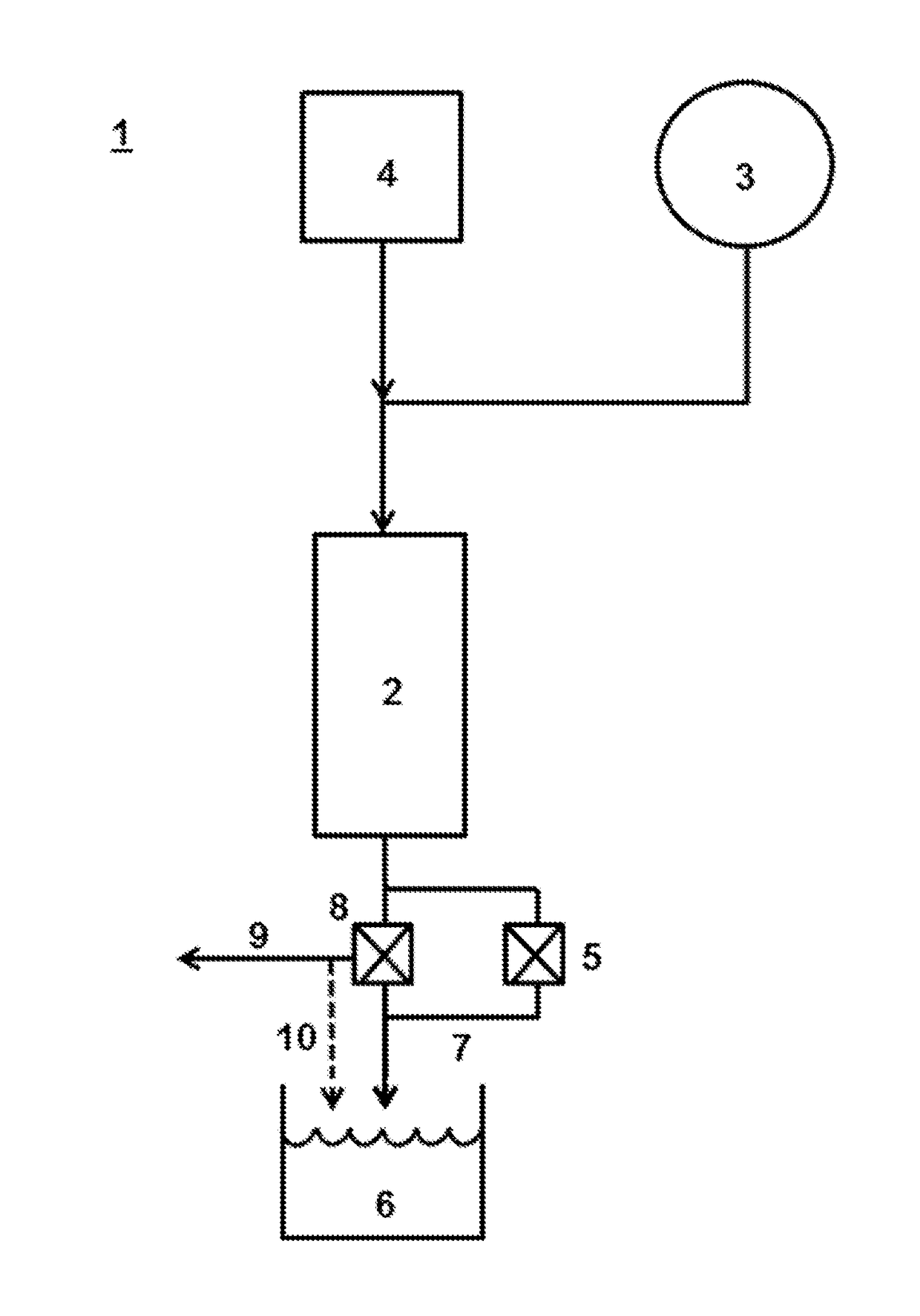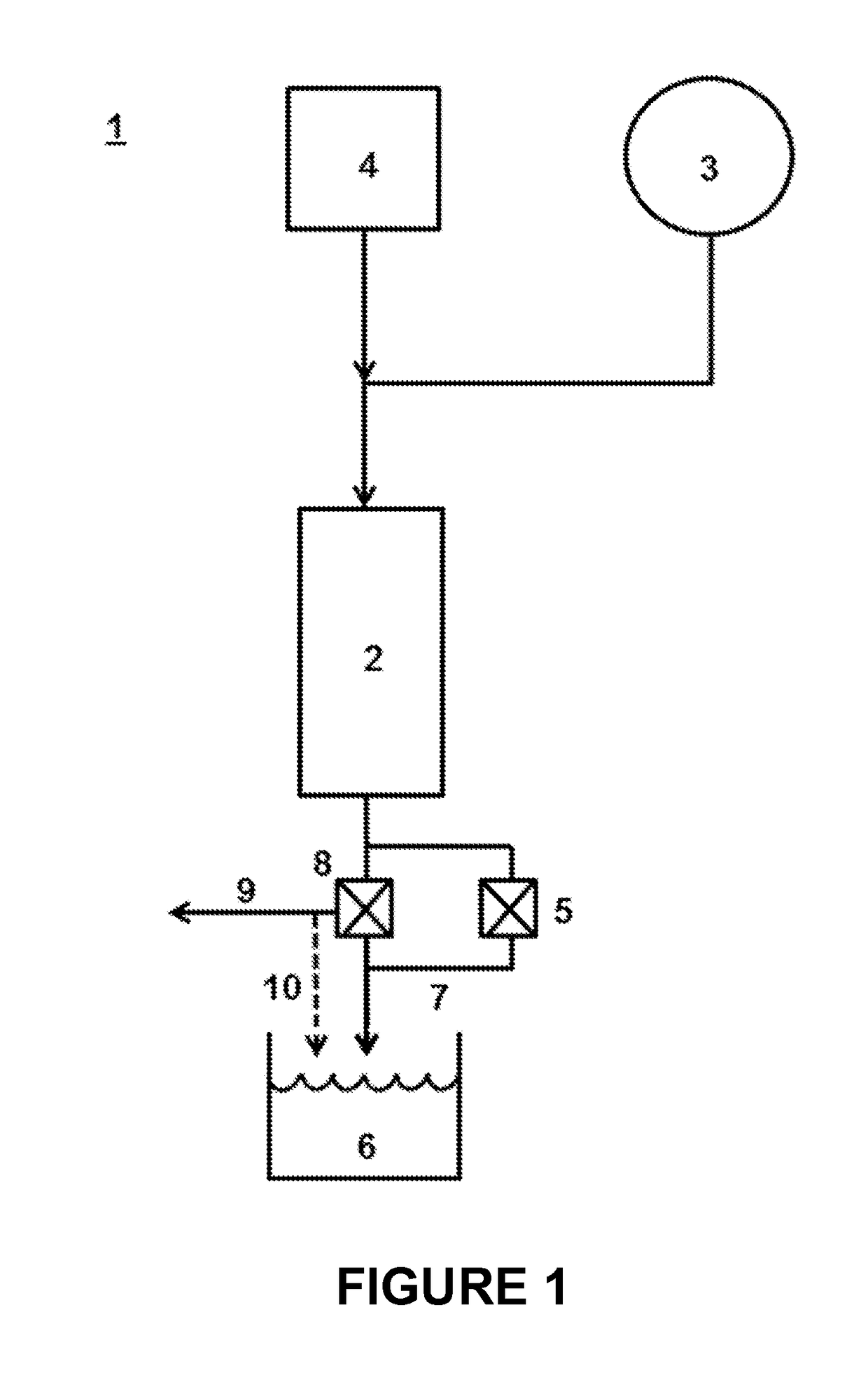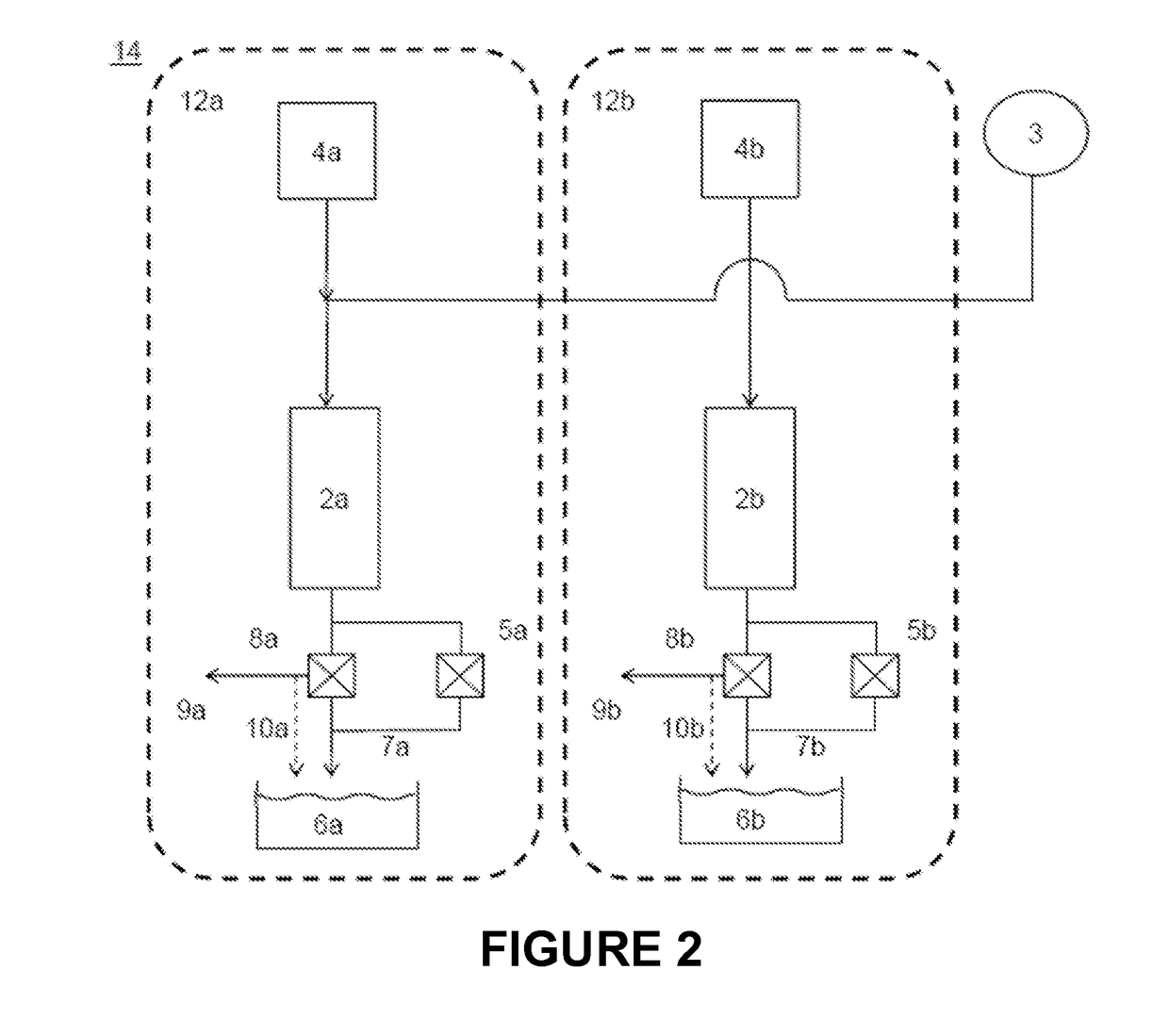Method And Apparatus For Removing A Fouling Substance From A Pressured Vessel
a pressure vessel and fouling substance technology, applied in the field of methods, to achieve the effect of rapid acceleration of fluid, no downtime, and increase in linear velocity of fluid
- Summary
- Abstract
- Description
- Claims
- Application Information
AI Technical Summary
Benefits of technology
Problems solved by technology
Method used
Image
Examples
examples
[0149]The methods disclosed herein generally take advantage of the high pressures already present in a pressurized vessel system to remove fouling material that has accumulated on the interior surface of the pressurized vessel (such as a reactor or pipe) without substantially interrupting normal operations of the pressurized vessel (such as hydrolysis of lignocellulosic biomass in a pressurized vessel). As shown with reference to system 1 in FIG. 1, under normal operating conditions (e.g., during hydrolysis of biomass), a slurry of biomass from tank 3 is pumped to high pressure (not shown) and contacted with hot compressed water (e.g., supercritical water) from hot compressed water heater / tank 4 just prior to or upon entering reactor 2, where the slurry is maintained at elevated temperature and pressure for a given residence time (typically about 1.5 seconds or less). The biomass of the slurry can be lignocellulosic biomass (e.g., size reduced raw biomass), a slurry of the solids re...
PUM
 Login to View More
Login to View More Abstract
Description
Claims
Application Information
 Login to View More
Login to View More - R&D
- Intellectual Property
- Life Sciences
- Materials
- Tech Scout
- Unparalleled Data Quality
- Higher Quality Content
- 60% Fewer Hallucinations
Browse by: Latest US Patents, China's latest patents, Technical Efficacy Thesaurus, Application Domain, Technology Topic, Popular Technical Reports.
© 2025 PatSnap. All rights reserved.Legal|Privacy policy|Modern Slavery Act Transparency Statement|Sitemap|About US| Contact US: help@patsnap.com



